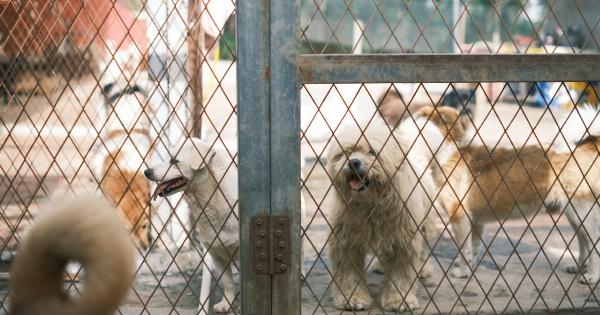Dogs have been our loyal companions for thousands of years. They are known for their ability to understand and communicate with humans, but it is equally important for us to understand them. One of the key ways they communicate is through body language.
How well do you read your dog’s body language? Take our test to find out!.
Understanding Dog Body Language
Dogs rely heavily on their body language to express their emotions, needs, and intentions. By understanding their body language, you can deepen your bond with your furry friend and ensure their well-being.
Let’s dive deeper into some key aspects of dog body language.
The Tail
The tail is often touted as one of the most obvious indicators of a dog’s emotions. While it’s true that a wagging tail usually signifies happiness, it’s essential to pay attention to the overall context.
A high and stiff tail can indicate alertness or aggression, while a tucked tail indicates fear or submission.
The Ears
Ears can provide valuable insight into a dog’s emotional state. When a dog’s ears are relaxed and in their natural position, it usually means they are calm and content.
However, raised ears can mean the dog is alert, while flattened ears may indicate fear or anxiety.
The Eyes
The eyes are often referred to as the windows to the soul, and this holds true for dogs as well. A soft gaze with relaxed eyes signifies a calm and friendly disposition.
On the other hand, wide-eyed stares, with dilated pupils, can indicate fear, perceived threat, or aggression. Understanding the eye language can save you from misinterpreting your dog’s intentions.
Facial Expressions
Similar to humans, dogs can convey a range of emotions through their facial expressions. Relaxed facial muscles, a slightly open mouth, and a panting tongue are usually signs of a comfortable and content dog.
However, a tightly closed mouth, tense lips, or bared teeth can indicate stress, fear, or aggression.
Posture and Body Stiffness
A dog’s overall posture and body stiffness can reveal a lot about their emotions. A relaxed and loose body usually signifies a happy and relaxed dog. On the other hand, a stiff and rigid body can indicate fear, aggression, or discomfort.
Paying attention to these subtle cues can help you respond appropriately to your dog’s needs.
Vocalizations
While body language is crucial for understanding dogs, their vocalizations also play a significant role. Barking, growling, whining, or howling are just a few of the ways dogs use their voices to communicate.
Each vocalization has a distinct meaning, and when combined with body language, it gives you a more comprehensive understanding of your dog’s emotions.
Social Significance
Learning to read your dog’s body language goes beyond just understanding their emotions. It also helps you navigate social interactions with other dogs.
By recognizing signs of fear, aggression, or playfulness in other dogs, you can ensure positive and safe interactions. This skill is especially important if you frequent dog parks or other places where dogs gather.
Dog Body Language Test
Now, it’s time to put your knowledge to the test with our Dog Body Language Quiz!.
1. What does a high, stiff tail usually indicate?.
<a) Happiness b) Aggression c) Fear d) Relaxation2. What do raised ears typically indicate?.
<a) Alertness b) Contentment c) Fear d) Submissiveness3. What can wide-eyed stares with dilated pupils suggest?.
<a) Happiness b) Fear c) Playfulness d) Relaxation4. What does a tightly closed mouth and tense lips suggest?.
<a) Happiness b) Aggression c) Relaxation d) Contentment5. What does a relaxed and loose body indicate?.
<a) Happiness b) Aggression c) Fear d) Relaxed6. What type of vocalization do dogs make to communicate fear?.
<a) Barking b) Growling c) Whining d) Howling7. Why is understanding dog body language important for social interactions?.
<a) To avoid dog parks b) To navigate social interactions with other dogs c) To understand cats better d) None of the above8. What does a wagging tail usually mean?.
<a) Aggression b) Discomfort c) Happiness d) Submission9. What does a dog’s relaxed gaze indicate?.
<a) Aggression b) Fear c) Contentment d) Alertness10. What does a tucked tail usually signify?.
<a) Fear b) Happiness c) Playfulness d) RelaxationQuiz Results
Count how many correct answers you got and see where you stand in interpreting your dog’s body language.
0-3 correct answers: It seems like you have some room for improvement in understanding your dog’s body language. Keep observing and learning to better understand your furry friend.
4-7 correct answers: You have a decent grasp of dog body language, but there is still more to learn. With continued practice, you can become even better at understanding your canine companion.
8-10 correct answers: Congratulations! You have a keen eye for reading your dog’s body language. Your furry friend is lucky to have such an attentive owner.
Conclusion
Understanding your dog’s body language is essential for building a strong bond and ensuring their happiness and well-being.
By paying attention to their tail, ears, eyes, facial expressions, posture, and vocalizations, you can decipher their emotions and respond appropriately. Remember, practice makes perfect, so keep observing and learning to become a true expert in reading your dog’s body language!.






























